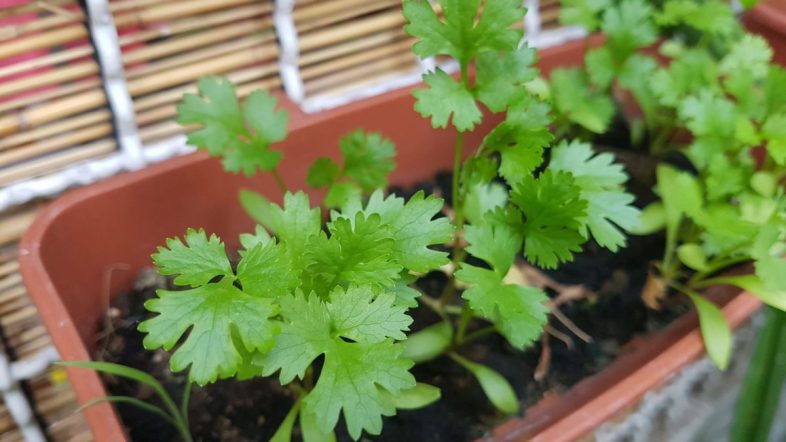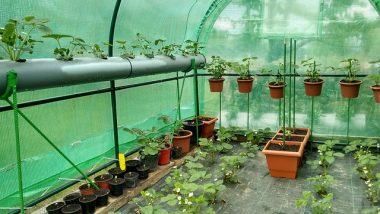Last updated on November 21st, 2025 at 07:01 am
Do Self-watering Pots Work for Southwest Plants? Self-watering pots can be a great way to water plants if you have a busy lifestyle. However, do self-watering pots work for Southwest plants?
While self-watering pots can be great for a variety of different plants, they are not practical for all types of plants. Some plants do not benefit from the regular supply of water self-watering plants provide, whereas others thrive from it. Before you use one, it is essential to know whether or not it is appropriate for your plant of choice.
What is a Self-Watering Pot?
A self-watering pot is a type of pot that is designed to water your plants for you. Instead of manually watering your plants, self-watering pots have a reservoir that supplies water to your plants.
With the use of sub-irrigation, the self-watering pot can deliver water directly to the plant’s roots. The water reservoir at the bottom of the pot allows plants to drink whenever they are thirsty. The water in the reservoir does not need to be frequently filled, which means you don’t have to worry about setting a schedule to regularly water your plants.
Self-watering pots are efficient and can even improve the health of your plants. They can be a great option for a variety of different plants as long as you know how to properly use them and provide your plants with the proper growing conditions.
Self-watering pots have four basic elements: growing bed, potting soil, water reservoir, and wicking system. The growing bed is the upper part of the pot that holds the soil and the plant.
Potting soil is key to a self-watering pot working properly. So, ideally, you want to use lightweight and absorbent potting soil.
The water reservoir is the bottom section of the pot that holds the water for the plant. There will be some features on the pot that will allow you to easily refill the reservoir.
The wicking system is part of the pot that delivers water from the reservoir to the roots. They are typically made of rope or strips of cloth.
Do Self-Watering Pots Work for Southwest Plants?
Southwest plants can include a variety of plants that thrive in hot summers and be drought tolerant. Common plants include cacti, succulents, Damianitas, Texas Rangers, Yellow Bells, sunflowers, California poppies, and Blackfoot daisies.
Since most Southwest plants typically do not need a lot of water, they are not the best candidate for self-watering pots. For example, cacti and succulents prefer to have their soil dry out between waterings.
While you can grow other Southwest plants in self-watering pots, they are generally best grown in regular pots. Since they are drought-tolerant, they typically don’t need the benefits of self-watering plants.
Pros and Cons of Self-Watering Pots
Pros
Several pros come with using self-watering pots. This is what has made them so popular among many plant lovers.
- Time Saving
Since you don’t have to water plants in a self-watering plant regularly, it will save you time. They are great for people with busy schedules and those who travel frequently.
- Healthier Plants
When using self-watering pots properly and providing the right conditions for your plants you will have healthier plants. Since it allows plants to drink when they are thirsty, you don’t have to worry about overwatering or underwatering.
- Eco-Friendly
Self-watering pots can be eco-friendly. Since they allow plants to regulate their water intake you don’t have to worry about wasting water.
Cons
While self-watering pots can be great, they do come with some cons. However, most people find the pros outweigh the cons.
- They Can Be Pricey
Self-watering pots can be more expensive than traditional pots. In addition, they can be harder to find and there are fewer styles available.
- Not Ideal for Plants That Need Lots of Water or Little Water
Self-watering pots are generally not ideal for plants that need too much water simply because you have to refill them so often. They are also not ideal for desert plants like succulents and cacti, as they prefer to dry out between waterings.
Conclusion
While self-watering pots offer plenty of convenience, they’re generally not the best choice for most Southwest plants. Many desert-adapted species—like agaves, yuccas, mesquites, and other xeric plants—prefer their soil to dry out between waterings. Self-watering containers tend to keep the soil consistently moist, which can lead to root rot, fungal issues, or weak root systems in plants that evolved to handle long dry spells.
That’s not to say self-watering pots are “bad”—they’re fantastic for thirsty plants like tropicals, annual flowers, and even many veggies. But when it comes to our drought-tolerant Southwest natives, well-draining soil and occasional deep watering is a much better match.
If you have any questions about self-watering containers—or which plants can actually thrive in them—feel free to ask in the comments below. I’m happy to help you figure out what works best for your plant and your climate!
Learn more about What are the Most Common Aloe Vera Plant Problems and How to Fix Them?






Do you carry Yellow Yarrow, red hot pokers, yellow Columbine, Butterfly weed- Asclepias? Do you carry or can get?
Yes, we carry Yellow Yarrow and many other types of Yarrow. Yellow Columbine is at the store. Asclepias plants (milkweed) should be arriving soon. Hopefully by late April or early May.